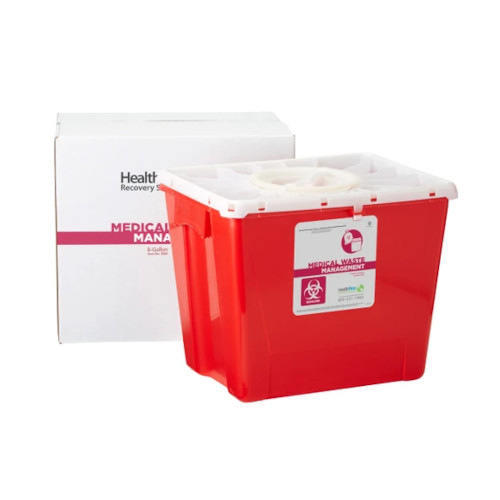Specialist Solutions for Health And Wellness: Revealing the Medical Waste Removal Service Benefit
Specialist Solutions for Health And Wellness: Revealing the Medical Waste Removal Service Benefit
Blog Article
Understanding the Different Sorts Of Garbage Disposal Techniques
In the world of waste administration, the range of disposal strategies available today is huge and varied, each method serving a distinct function in resolving the difficulty of waste disposal. click here. From recycling methods that aim to give new life to products, to the elaborate procedures of unsafe waste monitoring, the landscape of garbage disposal is intricate yet crucial for environmental sustainability. Comprehending the nuances of these different techniques not just loses light on the significance of accountable waste management yet likewise triggers us to rethink our strategy in the direction of garbage disposal in a swiftly evolving globe

Recycling Techniques
Recycling techniques are critical for sustainable waste administration techniques in both industrial and residential setups. medical waste removal. By carrying out effective recycling methods, a substantial quantity of waste can be diverted from garbage dumps, saving all-natural sources and lowering the environmental influence of manufacturing processes
In property areas, curbside recycling programs play a vital function in encouraging households to separate recyclable products from basic waste. Materials such as paper, plastics, glass, and steels can be sorted and accumulated for processing right into brand-new items, decreasing the need for basic materials and energy-intensive manufacturing procedures.
Industrial facilities likewise rely upon recycling techniques to reduce waste generation and promote a circular economic climate. By applying closed-loop systems, companies can reuse materials within their manufacturing procedures, minimizing costs and environmental footprint. medical waste removal service. In addition, commercial recycling programs commonly include partnerships with specialized recycling centers to ensure that products are correctly arranged, refined, and rehabilitated right into the supply chain
Composting Methods

Aerated static heap composting involves mixing organic waste materials in a big pile and routinely transforming it to ensure correct aeration. This technique is fit for smaller-scale operations and households.
In-vessel composting involves positioning natural waste in a shut container with regulated problems for temperature and oygenation. This approach works for handling food waste in metropolitan areas. Finally, windrow composting includes creating long rows of natural waste and routinely turning them to advertise disintegration. This technique is typically utilized in agricultural settings.
Landfill Disposal
Garbage dump disposal is a frequently made use of method for taking care of waste that can not be recycled or composted. Methane gas, a byproduct of decaying organic waste in garbage dumps, is frequently collected and utilized as a source of sustainable power. Efforts to lower reliance on garbage dumps include promoting waste reduction, recycling, and exploring alternate waste disposal techniques to reduce the ecological impact associated with traditional land fill disposal techniques.

Waste-to-Energy Incineration
Incineration of waste for energy generation is a technique significantly being thought about as an alternative to standard garbage dump disposal strategies. Waste-to-energy incineration entails the combustion of waste products at heats, commonly in specialized facilities created to produce electrical power or heat through the process - click here. This technique not just minimizes the volume of waste that would or else be destined for landfills but likewise takes advantage of the warmth generated during incineration to produce power
Among the essential advantages of waste-to-energy incineration is its capability to produce electrical power while reducing the environmental effect compared to traditional garbage dump disposal techniques. By transforming waste into energy, this strategy assists in reducing greenhouse gas exhausts and dependence on fossil fuels for energy generation. In addition, waste-to-energy facilities are outfitted with sophisticated air pollution control technologies to minimize possible toxic wastes launched throughout the burning procedure.
Contaminated Materials Monitoring
.jpg)
Thinking click here about the important significance of liable waste administration practices, specifically in the realm of environmental sustainability, the emphasis currently shifts in the direction of the complex domain of Contaminated materials Administration. Contaminated materials positions significant risks to both human health and the environment, necessitating specialized handling and disposal strategies. Usual examples of contaminated materials consist of chemicals, batteries, pesticides, and digital waste.
Contaminated materials Monitoring includes the recognition, collection, transport, therapy, and disposal of products regarded harmful or possibly dangerous. This procedure calls for adherence to strict laws and guidelines to minimize adverse influence on communities and public health. Different approaches are utilized in managing contaminated materials, consisting of recycling, safe land fills, encapsulation, and chemical treatment.
Proper Contaminated Materials Management is important for protecting against contamination of soil, water resources, and air pollution. It is vital for industries, research laboratories, medical care centers, and various other generators of contaminated materials to execute durable monitoring approaches, training programs, and emergency situation feedback intends to guarantee the risk-free handling and disposal of these products. Failure to handle contaminated materials properly can have significant repercussions, emphasizing the value of liable and diligent techniques in this field.
Final Thought
In conclusion, waste disposal techniques play an important duty in managing and lessening the impact of waste on the environment. It is essential for sectors and individuals to recognize the different waste disposal methods readily available and pick the most suitable method for sustainable waste administration.
In the world of waste monitoring, the array of disposal strategies readily available today is large and varied, each approach serving a distinctive function in addressing the challenge of waste disposal. click here. From recycling approaches that aim to provide new life to products, to the detailed processes of dangerous waste monitoring, the landscape of waste disposal is intricate yet important for ecological sustainability. Comprehending the subtleties of these various strategies not only drops light on the value of liable waste management however likewise prompts us to reconsider our method in the direction of waste disposal in a swiftly evolving world
Initiatives to decrease dependence on landfills consist of advertising waste decrease, reusing, and discovering alternate waste disposal techniques to lessen the ecological footprint connected with standard garbage dump disposal techniques.
It is crucial for industries and individuals to understand the various waste disposal techniques available and pick the most proper method for sustainable waste management.
Report this page